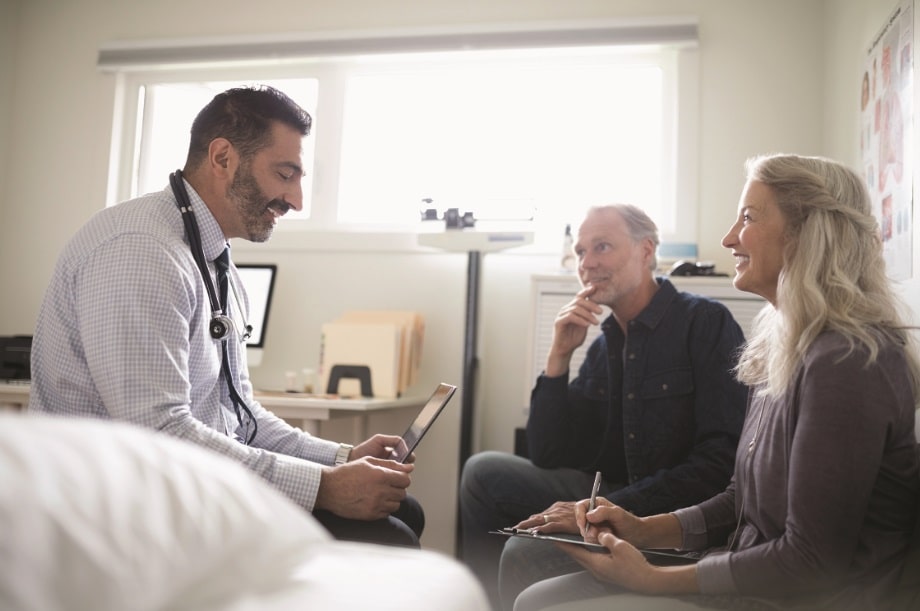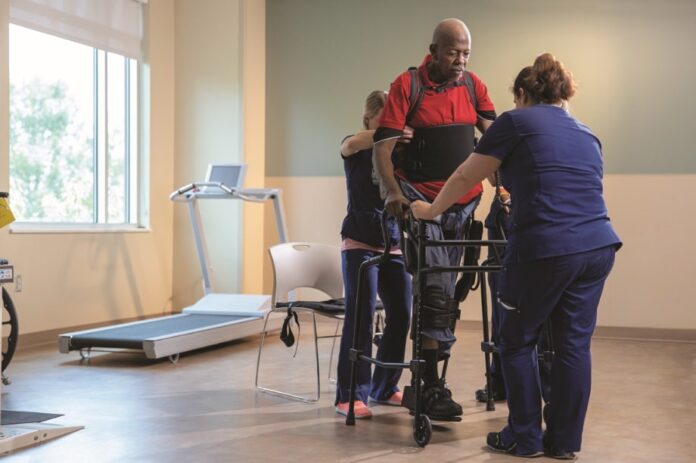Strokes change more than 795,000 lives in the United States each year.
In fact, according to the American Stroke Association, brain blockages or bleeds are one of the most common causes of disability and the fifth-leading cause of death. Starting the right rehabilitation program as soon as possible may help survivors recover better. One patient’s rehab journey might include balance, strength or mobility, while another might need speech or other therapies.
“The residual impact of a stroke can vary widely between patients in terms of deficits and severity,” said Pamela Duncan, Ph.D., F.A.H.A., American Stroke Association volunteer and professor of neurology at Wake Forest Baptist Health. “A rehabilitation program designed for you, where you need it, whether at a hospital or at home, is critical.”
For example, Jessica Alfonso was just 33 when she suffered a stroke. She credits her husband, Pablo, with saving her life – not just through the quick thinking that ensured her prompt medical care, but for being her voice as she worked to regain her ability to speak, read, walk and eat independently.
“He was with me for six weeks of inpatient rehabilitation,” Alfonso said. “Encouraging me and helping me communicate with my team while I re-learned everything. Without him, I may not have survived my stroke and I definitely wouldn’t be where I am today.”

The American Stroke Association’s Together to End Stroke™ initiative, nationally sponsored by Kindred Hospital Rehabilitation Services, provides recovery tips and resources for stroke survivors and their caregivers such as:
- Ask your doctor for an assessment of physical and cognitive challenges you face after a stroke and a specific plan to address each challenge.
- Work with your doctor to create a plan to manage risk factors to prevent another stroke. This may include being physically active, not smoking and managing your blood pressure.
- While recovery can occur years after a stroke, the most rapid recovery typically occurs during the first three months. As soon as your medical team gives the “all clear,” start your personalized rehabilitation program right away.
- It is recommended by American Heart Association guidelines that patients who can tolerate and are eligible for rehab at an inpatient rehabilitation facility receive it. However, rehabilitation can happen anywhere from a formal rehabilitation facility to the comfort of your home. Ask your medical team for recommendations on the best local rehab options to maximize recovery.
- Talk with your health care provider about any financial constraints, such as ability to pay for medications, so a plan can be developed to identify alternative community resources if needed.
- Communicate and follow up regularly with a team of health care providers as some challenges – such as remembering medications – may not be immediately clear.
“For many survivors, your functional state prior to the stroke plays a big role in how you recover,” Duncan said. “Working with your team of loved ones and health care providers to find and stick with the best rehabilitation program for you is key.”
For more information about recovery and how to make informed decisions after a stroke, visit stroke.org/recovery.
[family features]






